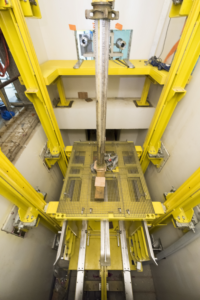
Boost the overall performance of your projects
Specifying your projects to meet needs spot-on, identifying the best possible solution, continuously optimising and controlling risks.
-
Controlling quality, cost and deadlines for a project requires:
- An understanding of the customer's actual need and a formal document recording this need, which is understandable and can been easily shared
- A guarantee that design decisions meet the need spot-on while identifying the best possible technico-economic alternative
- Risk control over the entire project life cycle
- A continuous estimation of the cost of a project for management purposes.
-
Orano engineers applied:
- the Minimum Technical Solution methodology, based on a functional analysis involving customers in the execution of a project at the earliest possible stage. This approach ensures that the requirements applicable to the definition of the architecture are reconsidered and that the customer obtains the maximum possible value;
- the Design to Target Cost policy to track costs and identify opportunities helping to achieve the target.
A risk assessment can be run for the project to complement these two approaches.
These approaches are supported by cost estimates produced by Orano experts.
- A guaranteed optimal solution designed to meet actual needs
- Less development iterations
- Risk control and costs at completion
-
- Using the Minimum Technical Solution (MTS) methodology via Orano engineers
- Implementing a Design to Target Cost (DTC) approach with the technical teams
- Assessing risks, while considering Orano feedback on projects if necessary
- Estimating costs
-
-


